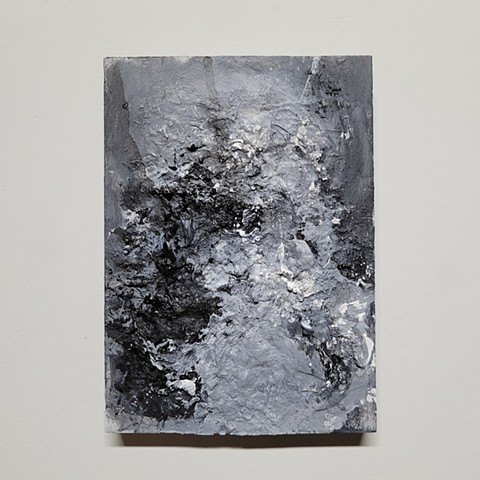The Orchard Series
Current body of work exploring the connections between agriculture and historical use of land and their symbolic resonances in contemporary life.
The impetus behind my this series is multifaceted but driven primarily for my need to acknowledge the role that loss has played in the last several years of my life. Although the therapeutic nature of artmaking is not the main conceptual thrust of my work, it often does play a vital role in energizing my art practice as I process various personal struggles and internal dialogues. In the tradition of abstract expressionism, I view painting, drawing, or mark making as a means of being present in the moment of art making. By extension, a painting becomes an object bearing physical witness to the accumulated history of actions exerted on it.
I am increasingly interested in exploring subject matter (objects, people, places, histories) that bear the physical consequence of human action. I find landscape painting (or the history of human interaction with land) to be a compelling starting point for this conversation.
The questions I am learning to ask are “How did we get here?” And “What is the next step forward?”
I grew up on a farm in Northern Michigan on roughly 100 acres of land. Previous farmers cleared the old growth trees in the early 1900’s to make room for agricultural purposes. I remember seeing a black and white photograph of our farm shortly after the area had been logged and being disoriented by the size and number of tree stumps. In the remaining woods on our property, I had seen hollowed stumps that I could easily have climbed into, but to realize the prior scale and distribution of these trees in our area astounded me. And yet, the story that I was implicitly told as a child was that this transformation of the landscape was the necessary course of progress and that my ancestors had every right to exercise this authority on the land. I never seriously considered what the land had been before and how this land came into our possession. The more I pay attention to the history of place, the more I am forced to grapple with my position within systems that historically privilege my own demographic at the expense of others.
The paradox of the farmer is that all life is born of some other death and that caring for one thing may mean the neglect of another. The goal is some form of symbiosis where as many things are flourishing as resources and the weather allow. Food production and agricultural practices are essential to sustain human life, but often the means of contemporary food production can jeopardize it as well. Given my own personal history of manual labor, cultivating food and caring for animals, I inherently gravitate to art making that deals with landscape and natural order. Even in my more non-objective artworks, there is often a contextualizing element, a strong horizontal structure or some other element that correlates to the human figure.
In the summer of 2020, as I grappled with George Floyd’s murder and the subsequent protests, I made a small series of paintings and drawings of trees stumps. In 2021, I moved from Chicago (my home for over a decade) to rural Northern Michigan. On a drive through Leelanau County, I encountered a large cherry orchard that had been completely stripped, leaving only a section of the tree stumps above the ground. After experiencing the events of the last few years, the stark images of the dark trunks with severed limbs became a stand-in for the emotional state of the larger American context. The shape of each trunk and the trauma that it has sustained is unique, but together their bodies form an entire orchard that bears witness to a collective loss that reaches back further than just recent events. Intuitively, I knew that making artwork rooted in this imagery could be a way of entering into my own personal grief and loss. I hope that others find this painting helpful in naming their own struggles in an effort to move forward.


















